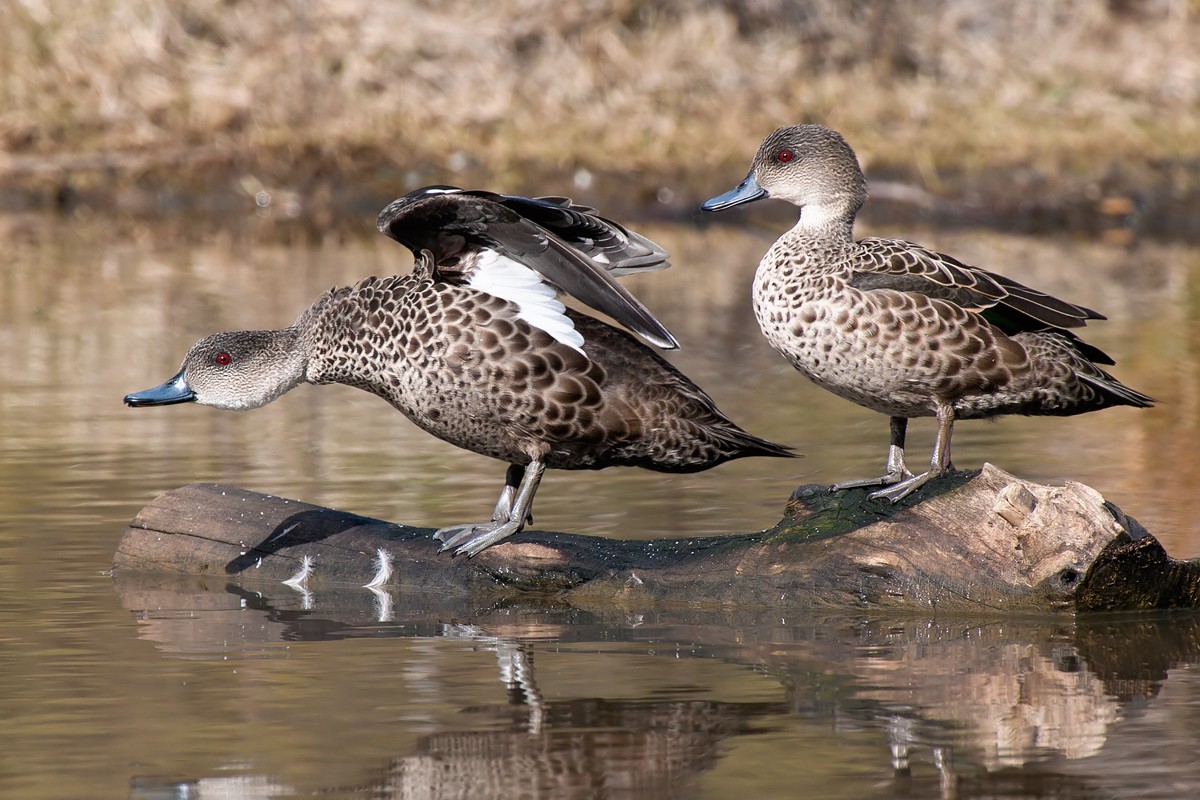Chestnut Teal
A species of Anas Scientific name : Anas castanea Genus : Anas
Chestnut Teal, A species of Anas
Botanical name: Anas castanea
Genus: Anas
Content
Description People often ask General Info
Description
The chestnut teal is darker and a slightly bigger bird than the grey teal. The male has a distinctive green coloured head and mottled brown body. The female has a brown head and mottled brown body. The female is almost identical in appearance to the grey teal. The female chestnut teal has a loud penetrating "laughing" quack repeated rapidly nine times or more. 
Size
46 cm
Colors
Brown
Black
Green
Red
Gray
White
Life Expectancy
15-20 years
Nest Placement
Ground
Feeding Habits
Chestnut Teal enjoys a varied diet, feeding on seeds, insects, vegetation, molluscs, and crustaceans. It exhibits unique foraging methods, typically dabbling on the water's surface or upending to reach food. Its diet showcases adaptive preferences to wetland habitats.
Habitat
The chestnut Teal inhabits a variety of wetland ecosystems, predominantly favoring coastal estuaries, lagoons, and marshes. These birds thrive in both saline and freshwater environments, frequenting areas such as saltmarshes, mangrove swamps, and along coastlines. They are also found inland, residing by rivers, saltpans, and saltwater lakes. Occasionally, chestnut Teal can be observed in significant numbers at sewage treatment lagoons, indicating their adaptability to different water-based habitats across broad geographical regions.
Dite type
Omnivorous
People often ask
General Info
Feeding Habits
Bird food type
Distribution Area
The chestnut teal is commonly distributed in south-eastern and south-western Australia, while vagrants may occur elsewhere. Tasmania and southern Victoria are the species’ stronghold, while vagrants have been found as far north as New Guinea and Lord Howe Island, and as far south as New Zealand. The chestnut teal prefers coastal estuaries and wetlands, and is indifferent to salinity. This bird is an omnivore. 
Species Status
Not globally threatened.
